Are you concerned that your creative work is being used without your permission? Protecting your intellectual property rights is crucial in today's fast-paced digital world, and understanding how to address infringement can help safeguard your innovations. In this article, we'll explore effective strategies for crafting a letter that not only communicates your concerns but also sets the stage for resolution. Join us as we dive deeper into this essential topic and discover how to protect your rights in the face of infringement.
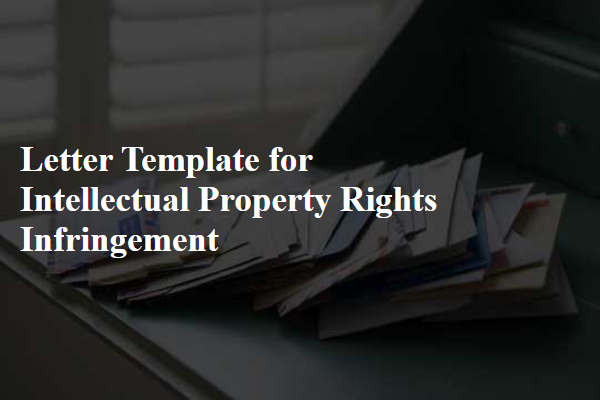
Accurate identification of the intellectual property
Intellectual property rights infringement occurs when an individual or organization uses someone else's protected intellectual property, such as patents, trademarks, copyrights, or trade secrets, without permission. Accurate identification of the intellectual property is essential in these cases. For instance, a specific logo from a well-known brand, such as Nike's Swoosh emblem, can represent a trademark violation if used commercially without authorization. Copyrighted content, such as a song from the album "Thriller" by Michael Jackson, becomes an infringement when reproduced or distributed without consent. In a patent scenario, an invention protected by a U.S. patent number, for example, 8,000,000, can be deemed infringed if its design or function is replicated without adherence to legal licensing agreements. Understanding these elements clarifies the legal basis for infringement claims and aids in the resolution process.
Detailed description of the infringement
Intellectual property rights infringement occurs when someone uses a protected work without permission, leading to significant legal and financial implications. For instance, a fashion designer's original clothing line created in New York (established in 2020) can be copied by a competitor, resulting in direct market competition. Copyright law protects artistic works; thus, unauthorized replication can lead to a violation notice. Trademarks safeguard brand names and logos; if another company uses a similar logo in commerce, confusion may arise among consumers, potentially diluting the original brand's identity. Patent infringements involve inventions; a tech company may replicate a patented smartphone feature without consent, resulting in substantial damages and injunctions. Protecting these rights is crucial for sustaining innovative environments and fostering creativity in industries worldwide.
Legal basis for ownership claims
Intellectual property rights infringement occurs when unauthorized use of protected works undermines the owner's legal entitlements. Such rights, recognized under various statutes, include copyrights, trademarks, and patents. Copyright laws, like the U.S. Copyright Act of 1976, safeguard original works of authorship, providing exclusive rights to creators. Trademark laws protect brand identifiers, often reinforced by the Lanham Act, which prohibits unauthorized use that might cause confusion among consumers. Patent protections, outlined in Title 35 of the United States Code, grant inventors exclusive rights to their inventions, ensuring that originality and innovation are legally recognized. These legal foundations establish clear parameters for ownership claims, enabling rightful owners to seek remedies against infringers, including damages and injunctions. The complexities of international treaties, such as the Berne Convention and the TRIPS Agreement, further enhance the enforcement of intellectual property rights globally.
Request for cessation and corrective measures
Intellectual property rights infringement poses significant risks to creators and businesses. A situation where unauthorized use of copyrighted materials, such as logos or written content, occurs can severely impact brand identity and revenue streams. For example, cases filed with the United States Patent and Trademark Office (USPTO) in 2022 highlighted over 300 instances of trademark infringement, illustrating the prevalence of this issue. Affected parties often request immediate cessation of infringing activities and seek corrective measures, including the removal of unauthorized materials from websites or social media platforms. Furthermore, ongoing legal costs can escalate, affecting financial stability for both small businesses and large corporations. Proper documentation, including evidence of ownership and instances of infringement, is crucial for building a strong case in these scenarios.
Contact information for further communication
Intellectual property rights infringement can lead to serious legal consequences for individuals or businesses involved. Timely communication is essential to resolve issues effectively. Utilizing registered addresses, phone numbers, and email addresses allows for efficient correspondence. For instance, the United States Patent and Trademark Office (USPTO) offers resources for reporting violations. In a situation involving copyright infringement, details about the infringing content, such as publication dates and platforms, should be documented. Engaging legal counsel specializing in intellectual property, particularly in federal jurisdictions (such as California or New York), can ensure protection of rights and facilitate negotiation.
Letter Template For Intellectual Property Rights Infringement Samples
Letter template of cease and desist for intellectual property rights violation
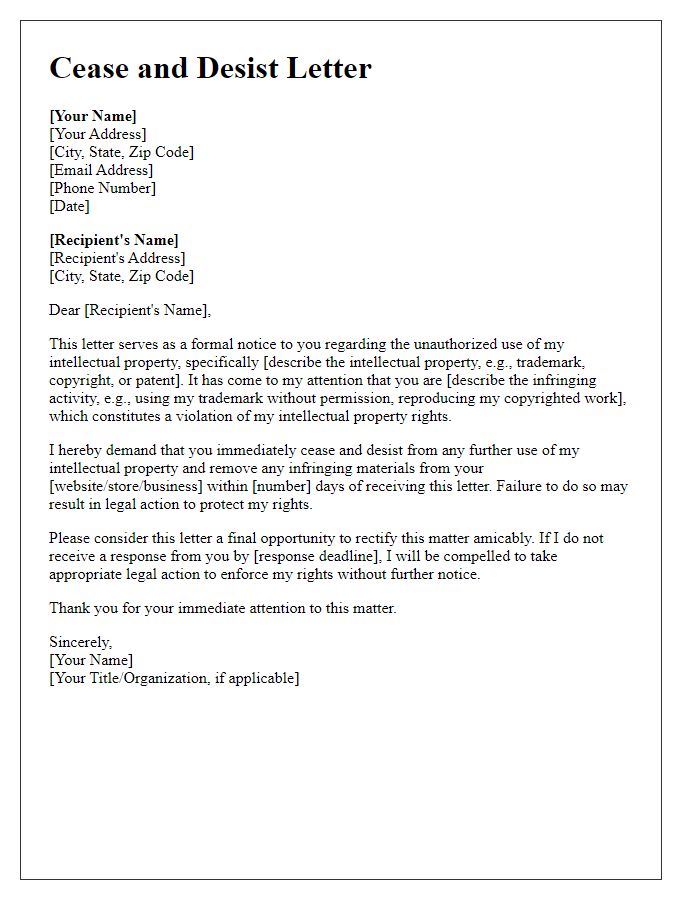

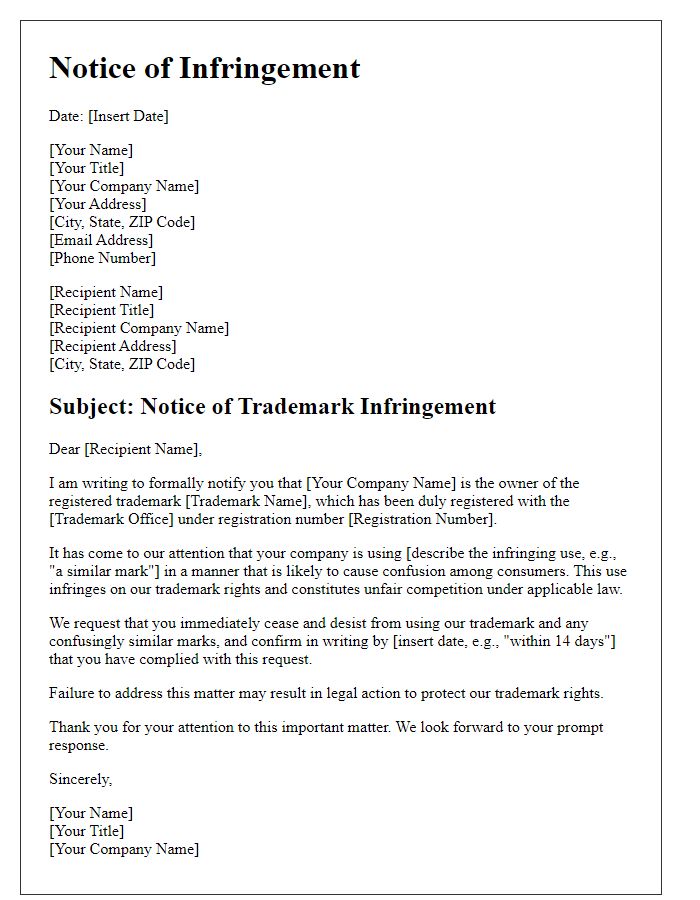
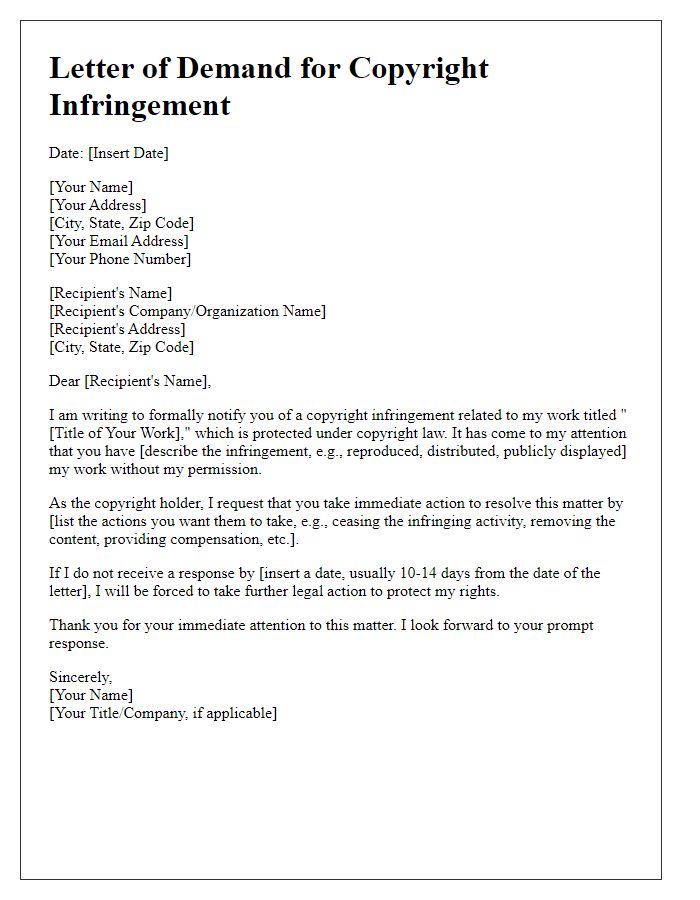
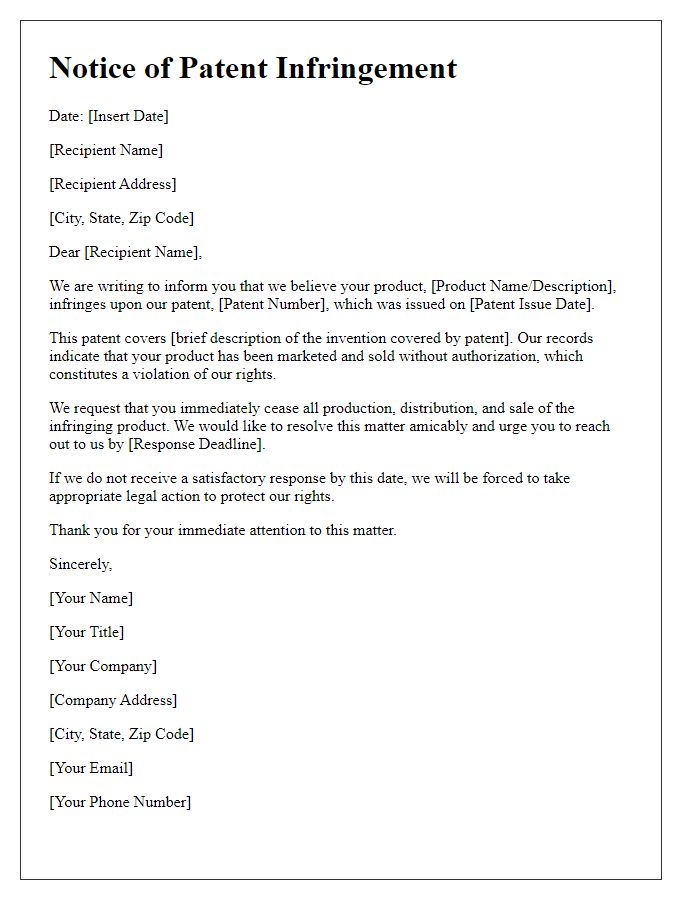
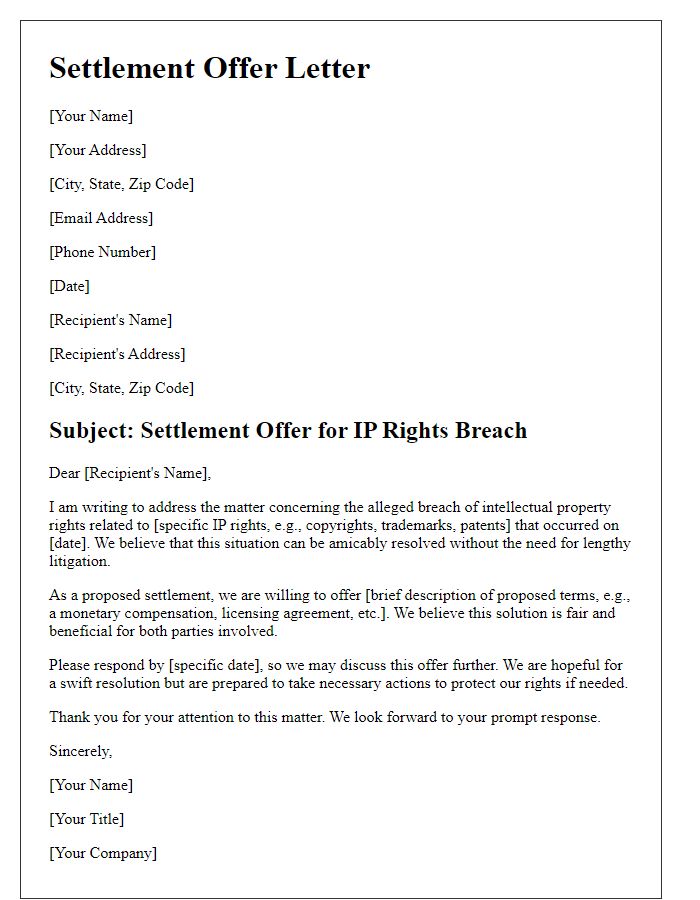
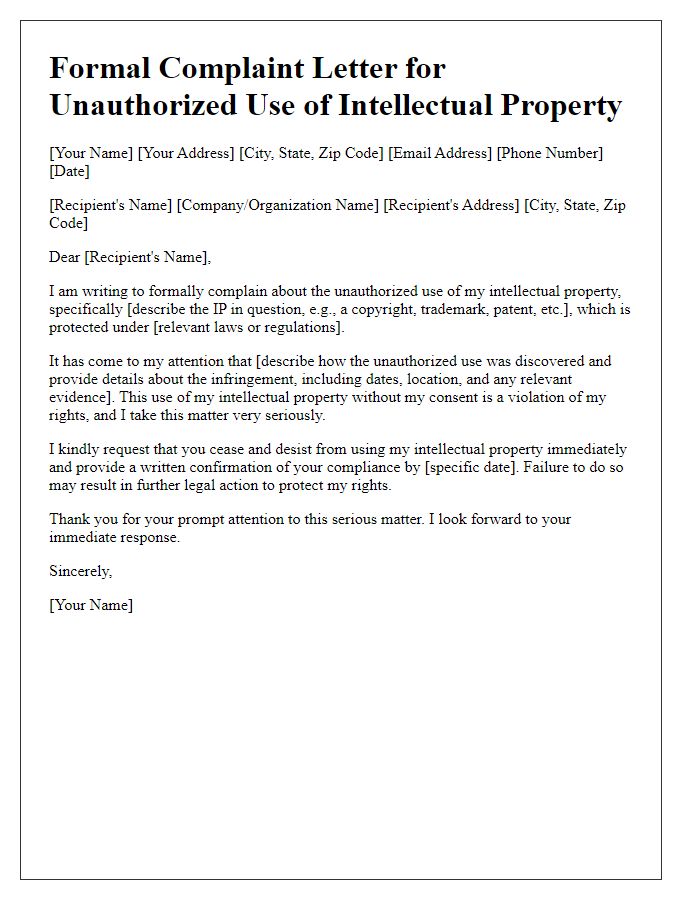
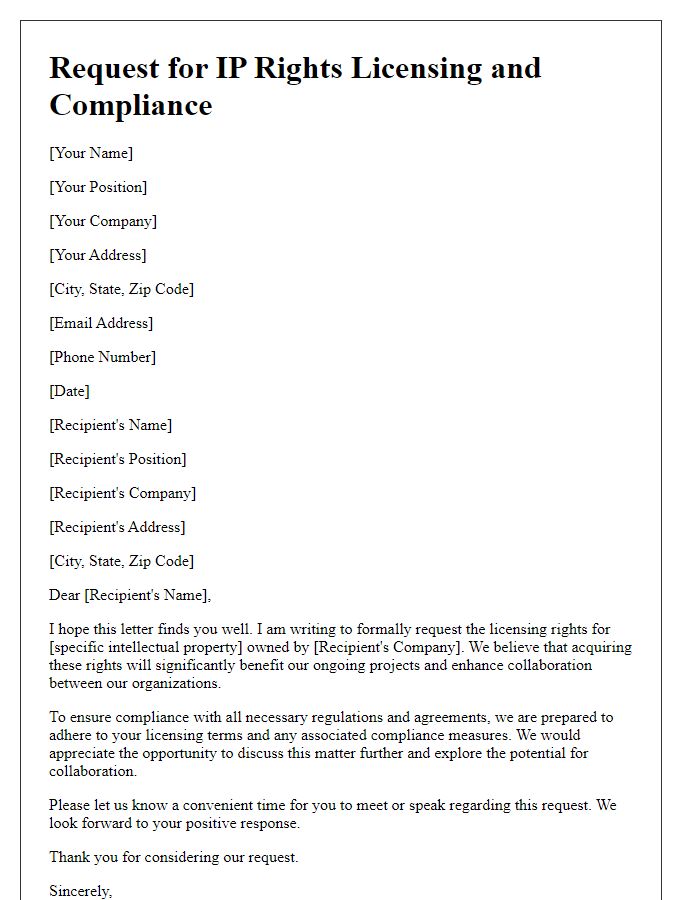
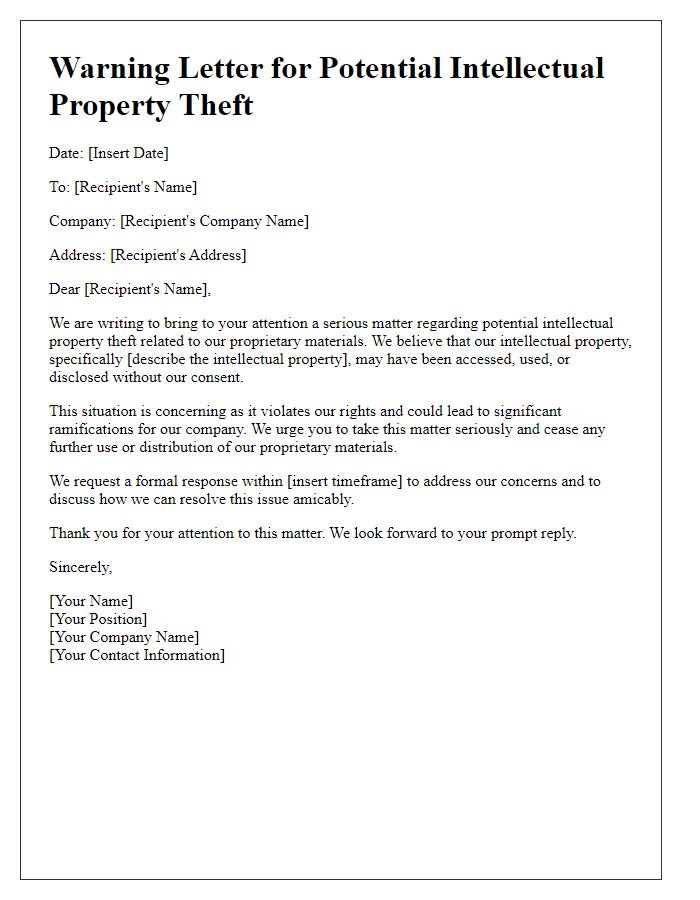
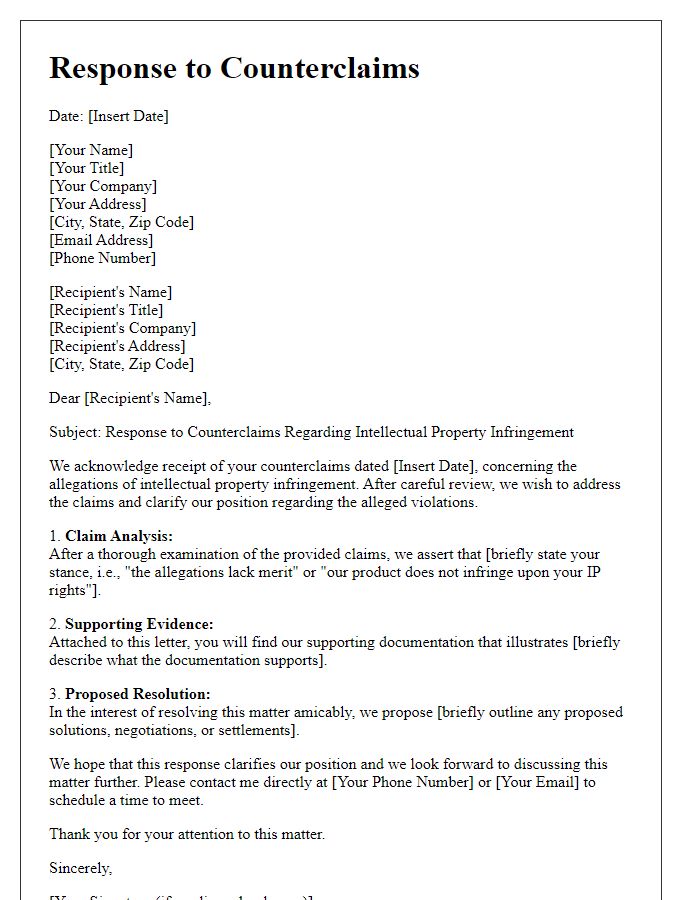
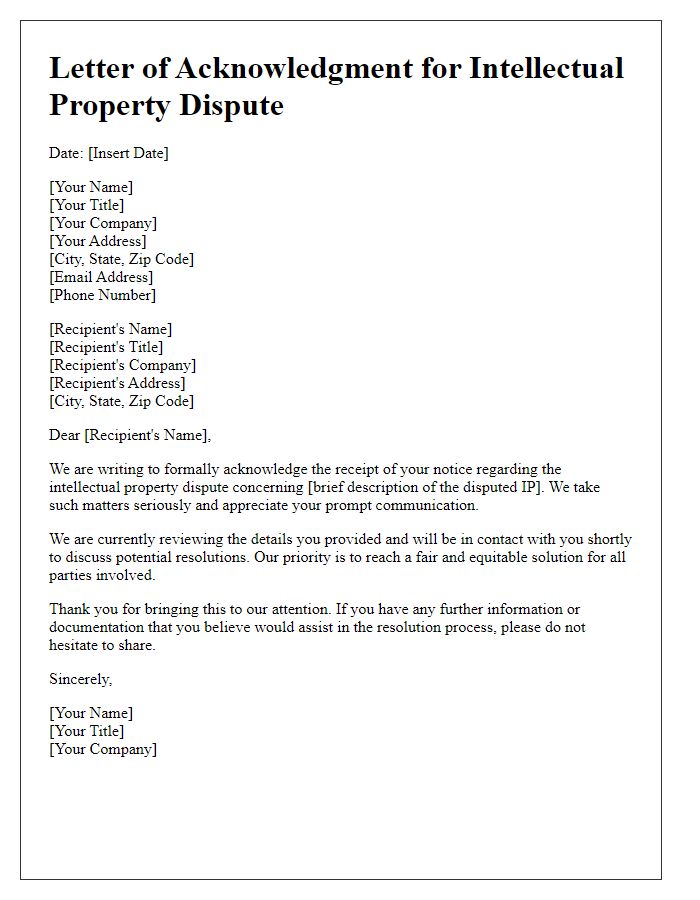

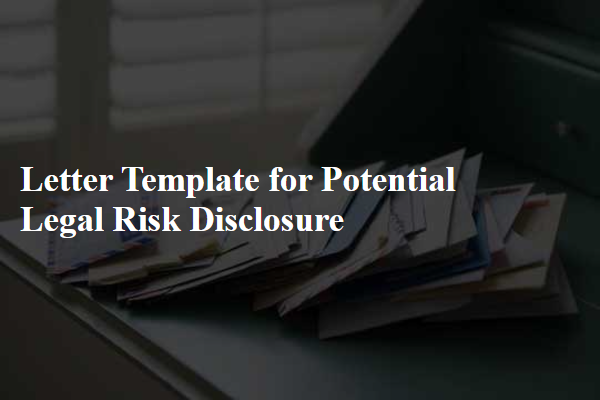
Comments